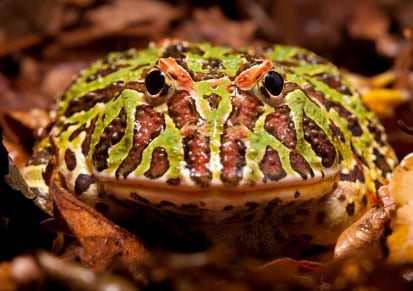The FWS seeks public comment on a petition to control the spread of chytrid fungus by listing infected amphibians as "injurious wildlife" under the Lacey Act.
The United States Fish and Wildlife Service (FWS) is seeking public input on a petition to list all amphibians and amphibian eggs infected with chytrid fungus (Batrachochytrium dendrobatidis), also known as Bd, as “injurious wildlife” under the Lacey Act. Species classified as injurious wildlife may not be imported into the U.S. or traded between states.
The petition was submitted in 2009 by the Defenders of Wildlife, a conservation activist group. The group, according to FWS, is concerned that unregulated trade threatens the survival of many amphibians, because the fungus causes chytridiomycosis, a disease that’s deadly to amphibians. Chytrid fungus has been identified as a primary factor in the listing of a number of amphibian species as threatened or endangered, FWS stated.
“The worldwide decline of amphibians is of great concern to us,” FWS acting director Rowan Gould said. “Chytrid is attributed as a major cause of this amphibian mortality. We understand that halting the spread of the fungus or eradicating it will take more than just regulating importation and transportation of infected amphibians, but it is a major step in the right direction.”
FWS published the Notice of Inquiry in the Federal Register on Sept. 17. The notice and the Defenders of Wildlife’s petition are available at regulations.gov under Docket No. FWS-R9-FHC-2009-0093.
The public has until Thursday, Dec. 16, 2010, to submit information and supporting data, including answers to the following questions.
1. What federal, state or tribal regulations exist to prevent the spread of chytrid fungus?
2. Are there any known mechanisms in the U.S. to test for, control or regulate movement or interstate transport of chytrid fungus?
3. How many businesses import live amphibians or the eggs into the U.S.?
4. How many businesses sell live amphibians or their eggs for interstate commerce?
5. What are the annual sales of these imported live amphibians and their eggs?
6. What species of amphibians, fish or other class of animal have been affected by chytrid fungus in the U.S., and were they infected?
7. What are the current and potential effects to species listed as threatened or endangered under the Endangered Species Act that are contaminated with chytrid fungus?
8. What are the potential costs of recovering threatened or endangered species affected by chytrid fungus?
9. What is the likelihood that wild amphibians would be affected by the importation of live amphibians or their eggs that harbor chytrid fungus?
10. What would it cost to eradicate chytrid fungus?
11. Are there any potential benefits to allowing the chytrid fungus pathogen to be imported?
12. What is the potential for the industries that conduct trade in amphibians to self-police through voluntary best practices? For example, how successful is the “Bd-Free Phibs Campaign” sponsored by the Pet Industry Joint Advisory Council (PIJAC)?
13. What peer-reviewed methods for detecting chytrid fungus have been published?
14. Are there any other comments or information regarding the listing of live amphibians and amphibian eggs as injurious unless free of chytrid fungus?
Comments may be submitted electronically or mailed or hand-delivered to Public Comments Processing, Attn: Docket No. FWS-R9-FHC- 2009-0093, Division of Policy and Directive Management, U.S. Fish and Wildlife Services, 4401 North Fairfax Drive, Suite 222, Arlington, VA 22203.
PIJAC reported that it is conducting a thorough analysis of the proposal and is working with stakeholders, including the pet industry, to collect relevant data as well as establish a means of communication and dialogue with interested PIJAC members. The Washington, D.C-based organization also plans to set up listening sessions with experts.
In the meantime, interested parties are invited to visit bd-freephibs.com to learn about the issue. Individuals engaged in testing and treatment may set up a partner profile on the website. In addition, PIJAC has established a blog on non-native amphibians.


